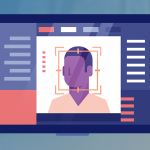Have you heard of FaceID? – the facial recognition system developed by Apple Inc. for iPhone and iPad Pro which allows the user to unlock the device, make payments and access sensitive data.
It has been almost two years since its release in November 2017 with the iPhone X and now Face Recognition has become a standard screen unlocking feature in every smartphone other than the PIN and fingerprint scanner. Facial recognition technology brings with it many benefits apart from being faster and more convenient to use compared to the other methods.
Apart from unlocking smartphone and making payments, Facial Recognition technology has evolved and is now being used as an identity/access card or an advanced security feature-
Some of the use cases being developed using Face Recognition today are –
- For Attendance Marking in Schools, Colleges or Offices;
- As a replacement to the physical Boarding Pass at Airports;
- As a means to access rooms or gates;
- As a Visitor Pass at Museums, Institutes and Offices;
- To identify and track people at Airports, Malls, Festivals and concerts.
……. The list goes on given the unlimited possibilities with Face Recognition Technology.
Though these use cases are still in a nascent stage, they are slowly become a requirement across industries worldwide.
You must be wondering that such use cases would require a lot of research and development, money, time and effort. Right?
Not really!
What if I told you that such use cases and many more can be build, implemented and deployed within two weeks!
Yes, just two weeks!
Leveraging AI and Deep Learning Technology of Microsoft Azure, ShepHertz has successfully developed and deployed use cases based on Face Recognition technology for some prominent Indian enterprises, taking care of 10,000+ faces every day!
Just how a user registers his/her face to unlock a smartphone, Face Recognition Technology works on the same underlying principle. Using biometrics, the face recognition system maps facial features of a person and then stores the facial images in a database – either locally or on Cloud. The system then compares the face from this database (at the time of next face capture) and generates a confidence score. Based on the set confidence threshold (say 80%), if the score is higher than the threshold, then it returns a match otherwise if it is lower than the threshold than it does not return a match.
Using this, any use case on Face Recognition can be built – be it Facial Attendance Management or Visitor Management; Intruder Detection; Finding missing persons, etc.
What are the benefits of Facial Recognition?
- Ease of Integration with existing database.
- Configurable – Company specific processes, workflows, notifications as per roles defined.
- Flexible Deployment Model – Cloud, On-premise, Hybrid
- Intuitive UI, Custom Branding, Logos etc.
- No/ Negligible Infrastructure costs –It works with all kinds of cameras, from basic commodity webcams to advance surveillance cameras
- Can interact with automation doors or any other hardware through IoT integration. E.g. Open Doors – Conference, server rooms
- Stores data locally in case of low connectivity/ bandwidth and syncs it later.
Here is a simple way for you to know how Face Recognition Technology works –
ShepHertz Face AI + Any Camera Device + Any Deployment Model = Any possible Face Recognition use case.
If you need to deploy Face Recognition based use case at your Organisation or want to learn more about ShepHertz Face Recognition Solutions, connect with us today at sales@shephertz.com.



















Leave A Reply